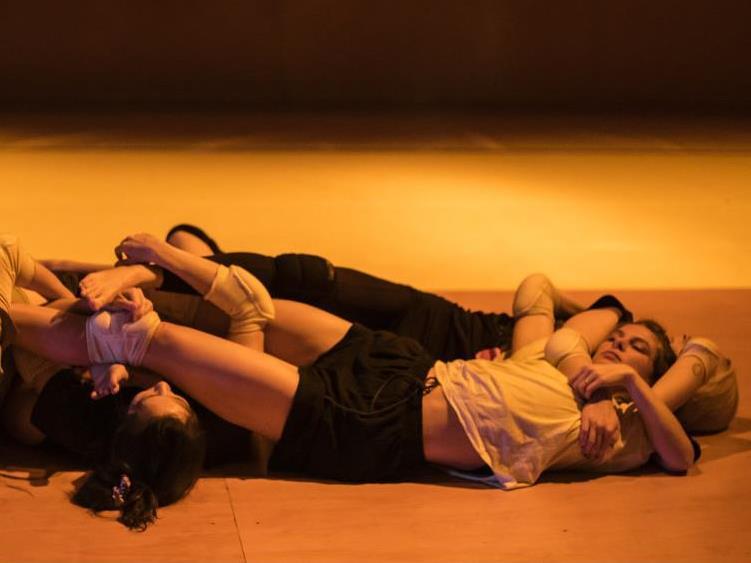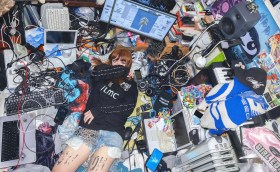Mark Twain is said to have once heard an excellent sermon and resolved to put a dollar in the collection plate. But the preacher went on too long and Twain lowered his intended offering to 50 cents, then 20, then 10. By the time the collection plate came around, he claimed he wanted to take money out.
I felt a little the same way in assessing Atlanta Eke’s fascinating but frustrating dance work Miss Universal.
The first half of the work is a coherent and gorgeous exploration of the capacity of life forms. I was ready to give it at least four stars and to praise it lavishly. But then the whole thing fell apart. A series of additional scenes neither connected with the rest of the work nor satisfied on their own terms. I started losing interest until I was almost ready to take money out of the collection plate.
Miss Universal begins in the empty studio space of Chunky Move, which commissioned Eke’s work. The audience mills around sipping wine and chatting as a beautiful monophonic string melody and a subtly beating electronic harp gather our attention. The room darkens and four women begin to move among us, each carrying a light. They strip down to mustard-coloured wetsuits and with matching bleached-blonde hair we have a discomforting sense of a dystopian vision, part science fiction, part Boys from Brazil.
Then the stacked seats of the studio emerge and the women climb the bleachers and begin to perform in the audience space, while the audience huddles back into the stage space. The reversal of position between player and audience sets up a potent dynamic.
Starting at the top of the seating area the dancers begin to grapple and roll themselves down the raked seating in an extraordinary fluid and powerful movement, progressing onto the stage where the audience moves around them and eventually, mostly, retreats to the seats.
This process of grappling and wrestling, moving in twos and fours, comprises about the first half of Miss Universal and it is thoroughly engaging. The dancers are living sculptures, their bodies impressive in strength and endurance and their shapes almost unbelievably plastic.
The wrestling is neither aggressive nor erotic. It is exploratory, pushing the boundaries of bodies in a way which is organic and quite beautiful. At times the action is molecular the bodies forming bonds and loosening in a series of attractions and repulsions. In other movements we have a sense of animals, occasionally humorous, often fascinating creatures that might have been unearthed by David Attenborough.This part of the work climaxes with some impressive rope work as the four women fly into one another, grappling in the air.
The dancers are not women so much as organic units tapping into universal life forms.
Then the lights and the mood change. The women lie on the floor and begin an incoherent conversation about love, in which they sound like a bunch of stoned teenagers. Fail.
A welder appears behind a black curtain and gives us some attractive blue sparks. Why? No idea.
Things look up a little up when the women reappear with light-bulbed hula hoops and perform a linked mechanistic routine. Perhaps there are echoes here of the early connections and the movement itself has moments of beauty but it is nothing like the grapples.
Some random props and abstractions follow. I have lost interest. I wish the whole thing had stopped after those magnificent grappling scenes. I would have seen a short but coherent and thoroughly rewarding work.
Rating: 3 out of 5 stars
Miss Universal
by Atlanta Eke
Chunky Move Studio
Until 12 December 12
Tickets






